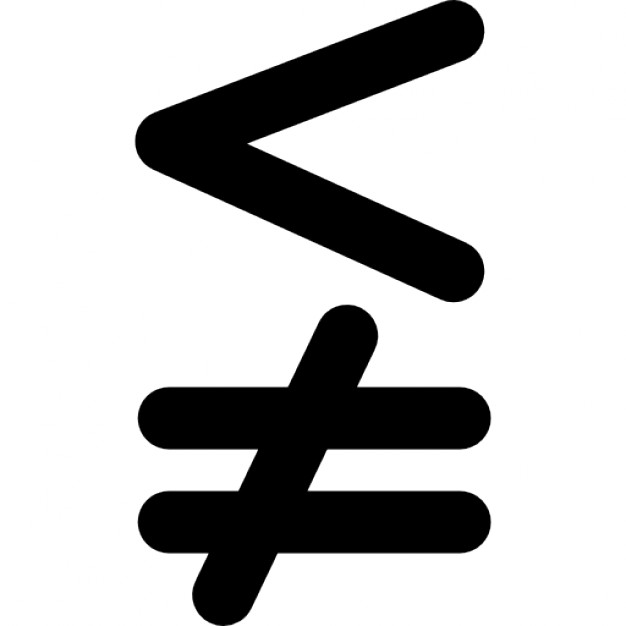

If you want to insert the does not equal sign (not equal to sign), you can use Insert Symbol. Inserting a not equal to sign using Insert Symbol
#Not equal to sign how to
Recommended article: How to Check Word Count in Microsoft Word (4 Ways)ĭo you want to learn more about Microsoft Word? Check out our virtual classroom or live classroom Word courses > You can insert the does not equal sign (not equal to sign) in a Word document using Insert Symbol, a keyboard shortcut, an AutoCorrect entry or an Alt shortcut. Otherwise, the NOT is interpreted as a logical operator and the implied insertion of the subject or relational operator results in a negated relation condition.Insert a Does Not Equal or Not Equal To Sign or Symbol in Microsoft Word Documentsīy Avantix Learning Team | Updated October 9, 2021Īpplies to: Microsoft ® Word ® 2013, 2016, 2019 or 365 (Windows).If the word immediately following NOT is GREATER, “>”, LESS, “=”, or “=”, then the NOT participates as part of the relational operator.If the word NOT is used in an abbreviated combined relation condition, it has the following meaning: Except for the source of the initial relation condition, no parentheses may appear in the sequence of abbreviated conditions. The insertion of an omitted subject or relational operator terminates once a complete simple condition is encountered within a complex condition.

When you use such abbreviations, it is as if the last preceding stated subject was inserted in the place of the omitted subject, and the last stated relational operator was inserted in the place of the omitted relational operator. Within a sequence of relation conditions, both of the above forms of abbreviation may be used. The format for an abbreviated combined relation condition is: condition. omitting both the subject and the relational operator.omitting the subject of the relation condition (the left-hand component condition).When simple or negated simple conditions are combined in a consecutive sequence, the relation conditions may be abbreviated. Otherwise, the operand with the smaller character in the first unequal pair is considered less than the other operand. If all the characters are the same, then the operands are considered equal. Characters are then compared in corresponding positions starting from the left end and continuing until either a pair of unequal characters is encountered or the right end of the operand is reached.

When the comparison is performed, the shorter operand (if any) is treated as though it were extended on the right with spaces to make the operands of equal size.A non-integer numeric operand may not be compared to a non-numeric operand. This alphanumeric item is then used in the comparison. The numeric operand is treated as though it were moved to an alphanumeric data item of the same size as the numeric data item. If one of the operands is numeric, it must be an integer data item or an integer literal.For non-numeric operands, or one numeric and one non-numeric operand, a comparison is made with respect to the program’s collating sequence of characters.


 0 kommentar(er)
0 kommentar(er)
